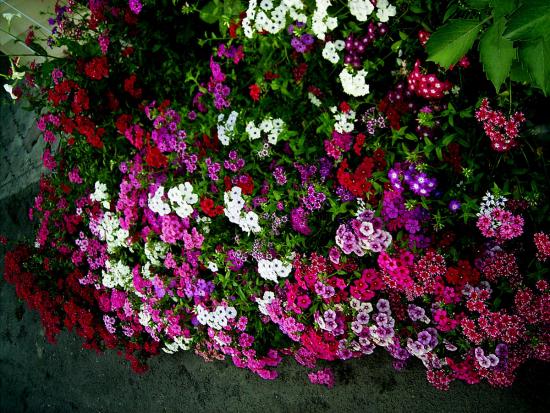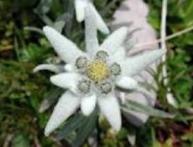Annual phloxes: planting and care rules, growing time

On the site of any country house you can see annual phloxes. This is a plant of the Blue family and there are more than 60 species. Plants attract with their variety of colors, their beauty and wonderful aroma. Grow annuals phlox It’s not difficult, the main thing is to regularly care for the plant.
Content
Annual phloxes: varieties
Phlox Drummond is the only annual species of phlox that has several varieties. The most common are:
- Phlox "Star Rain". The flowers are shaped like stars. They can be one-color or two-color.
- Phlox "Shimmering Star". The plant is low-growing, up to 25 cm high. Phlox flowers are large with pointed petals at the end.
- Phlox "Chanel". The bush is compact and covered with double flowers of yellow-red color.
- Phlox Promise Pink. The flowers are large and double, pink in color with a pleasant aroma. It has abundant and long-lasting flowering.
This plant will make flower beds and lawns of any suburban area more attractive.
Methods and timing of cultivation
Reproduction Phlox growing can be done in one of two ways: seeds and cuttings. From mid-May to June, cuttings are carried out. To do this, cut off a cutting with two or three leaves and plant it in open ground. In a month, the plant will form a root system and by autumn it will bloom.Cultivation by sowing seeds is carried out in March or April.

During this period, seeds are sown for seedlings. After the shoots appear, plant them individually and place them on the windowsill. It is important to avoid direct sunlight. To do this, cover the plantings with any covering material. If you sow seeds in open ground, it is recommended to do this in May. During this period, the earth is already well warmed up.
It should be remembered that phlox grown from seedlings bloom all summer, and seeds sown in the ground bloom only at the end of summer. You can sow seeds in the winter, in October or November. Phlox tolerate frost well, but it is recommended to insulate the planting site with dry leaves or grass.
Preparation and planting
If phlox is grown from seeds for seedlings, then the seed must be pre-soaked. You can use a specially prepared solution of potassium permanganate or soft water. Soak the seeds for a day, then take them out, dry them, put them on gauze and put them on the windowsill to warm up. sow seeds should be done every 3-4 cm, not buried in the ground, but sprinkled on top. Next, spray with a spray bottle and cover the container with glass. It is important not to forget to regularly water and ventilate the seedlings.
Seed germination depends on temperature and humidity. The temperature should be between 17-20 degrees, and high humidity should also be maintained. It is important not to forget about timely watering. Before planting phlox in open ground, it is necessary to prepare the soil. The soil must be fertile and moist.
It is undesirable to plant the plant on clay, acidic and damp soils. The soil needs to be fertilized.Per square meter you should take about 7 kg of peat, 5 kg of compost, 300-400 g of ash.
Mix everything well and add a little sand, potassium sulfate and nitrophoska, 30 g each, to the mixture. Apply the prepared fertilizer to the soil and dig up the ground. After 2-3 weeks you can plant the plants. It is important to know that it is forbidden to apply manure under phlox, as the plant can be affected by various rots. It is recommended to sow seeds or plant seedlings in shaded areas. This way you can admire the flowering of phlox for a long time.
Sowing seeds into the soil is carried out to a depth of about 1-1.5 cm. In the spring, the seedlings will sprout, and it will be necessary to pick. Seedlings planted at a distance of 18-20 cm. After a week, young plants should be fed with saltpeter. It is better to plant the plant in the evening or in cloudy weather. Low-growing varieties are planted at a distance of 40 cm from each other, plants of medium length - 50-55 cm, and tall ones - 60-70 cm. The depth of the hole is about 15-20 cm.
Place the seedling in the prepared hole and cover it with soil. In this case, the stems should be buried 3-5 cm. This is necessary so that the root collar does not get sunburn, and the plant does not freeze in winter. After this, water and mulch.
Plant care

After planting, annual phloxes need to be watered every 2-3 days for 2 weeks. Watering should be moderate. You will need 2 buckets of water per square meter. During dry periods, water regularly in the morning and evening. In hot weather, you should not water the plant with cold water, as this can lead to cracking of the root system.
Feed Phlox should be applied at least 3 times during the summer. Dry fertilizers are applied if the summer is rainy.If there is little precipitation, liquid fertilizer is applied. To prepare dry fertilizer, take a bucket of humus and 2 tablespoons of urea. Mix the ingredients and scatter them next to the plants.
If it is necessary to apply liquid fertilizer, then dilute 2 tablespoons of urea in 10 liters of water. These fertilizers are applied when the stems grow. With the appearance of buds, you can perform a second feeding. Dilute nitrophoska (60 g) in a 10-liter bucket. You can also add special fertilizers for flowering plants. The last feeding is done after the phloxes have bloomed.
Superphosphate and potassium sulfate are diluted in equal amounts of 30 g in a bucket of water. For dry feeding, take 8-10 kg of peat, 60-70 g of phosphorus-potassium fertilizer and the same amount of “Autumn” fertilizer. Proper preparation of fertilizer and optimal timing of application next year will ensure abundant and long-lasting flowering. When caring for phlox, you should not forget to mulch the soil, loosen and remove weeds.
Mulching should be carried out constantly to prevent drying out and ensure air permeability of the soil. You can use humus, compost, dry peat or leaves as mulch. Phloxes do not require care. If you follow all the recommendations, you can enjoy lush and bright flowering all summer long.
Video about phlox in home garden design:










